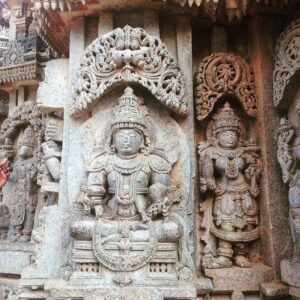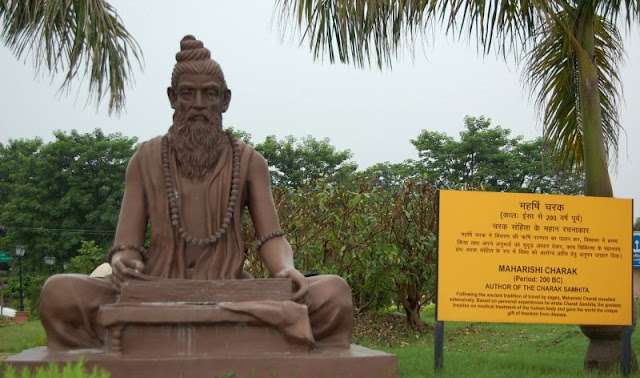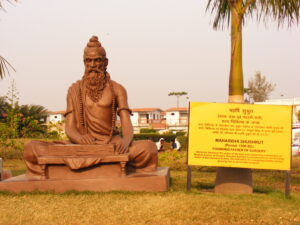Have you ever come across something ancient, exotic, and systematic at the same time? Ayurveda is one of those things. Originated in ancient India as a collection of healing methods, Ayurveda used to be India’s centralized system of medicine. Even with the arrival of the modern medical system, Ayurveda is still relevant, thanks to the richness of its history and the research people have done in the field.
The whole system of Ayurveda works on a pretty straightforward principle. There are three doshas in the human body, and the correct balance between them leads to a healthy life. The first dosha, ‘Vata,’ is characterized by all the movements that happen inside the body. ‘Pitta’ is characterized by metabolism, while ‘Kapha’ is characterized by the nutrition and nourishment of the body. If any of these doshas are unbalanced, there is a high chance for a disease corresponding to the unbalanced dosha. Ayurvedic treatments entail balancing the three doshas and restoring health.
Rather than a complex treatment after the diagnosis of a disease, Ayurveda focuses more on its prevention by making suitable alterations to the human lifestyle by following the course of nature.
Unlike most other ancient systems of medicine, Ayurveda is still widely practiced, and people all over the world travel to India in seek quality Ayurvedic treatment. We all know how Ayurveda is being used in the modern world and how it has become a powerful alternate system of medicine; what is lesser known is its deep history. How it originated and how it made ancient India a superior culture still remains a myth to most of us. The time has come to unlock the mystery.
The Origin of Ayurveda: The Myth
Several legendary mythical accounts (Puranas) state that Ayurveda was the knowledge possessed by the Gods and passed on to the humans by the Gods themselves. The most prevalent version regarding this is that Brahma, the god of creation and knowledge, was the one who developed Ayurveda. He passed on his knowledge to Dhanvantari, an incarnation of Lord Vishnu, the god of upkeep of the world. Dhanvantari then incarnated himself as a king of Varanasi, a city in India, and taught Ayurveda to a group of scholars, and that’s how legend says the knowledge of Ayurveda was passed on to humans.

Sculpture of Dhanvantari: Image Credit
Dhanvantari is still considered the god of Ayurveda. The Indian government has even declared Dhanvantari Trayodashi (a special day on the Indian calendar during Diwali) as National Ayurveda day.
The Origin of Ayurveda: History
Myths and legends aside, physical documentation of Ayurveda is said to be the Vedas, a group of books that dictates the way of life of living beings on Earth. Although Vedas consists of hymns about herbal treatment and human anatomy, they are not considered the epitome of Ayurvedic documentation due to the inclusion of spiritual and religious topics in them. Two ancient books, despite their religious undertones, are majorly considered the basis of Ayurveda as we see it today:
Charaka Samhita
Charaka Samhita is believed to be written and rewritten by a group of sages and scholars with significant contributions by Charaka, an Indian scholar who is believed to be a student of the ancient Indian university of Takshashila. It’s said that the entire composition of Charaka Samhita was done throughout several centuries, starting from the 4th century BCE with contributions from Charaka in the 2nd century BCE, and the final rewrite was done around the 6th century CE.

Statue of Charaka: Image Credit
Charaka Samhita bases its research on Atharvaveda, one of the four primary Vedas which contains hymns about human health and treatments. It is a collection of eight books (called Sthanas), spanning 120 chapters. It introduces the concepts of immunity, metabolism, and digestion and does not give much importance to microbes.
The Sutra Sthana deals with general health and the prevention of diseases by following a healthy lifestyle. The Nidana Sthana comprises eight chapters dealing with pathology and diseases. The third book, the Vimana Sthana, dictates over 8 sections on the quality and ethics that a physician must follow. Sarira Sthana also has 8 chapters that deal with the anatomy of the human body. Indria Sthana is the sixth book comprising 12 chapters explaining the patients’ sensory responses. Cikitsa Sthana also contains 12 chapters that deal with treating diseases with various medicines. While the seventh book, Kalpa Sthana, deals with pharmaceuticals in 12 chapters, the final book Siddhi Sthana explains the cure of diseases, hygiene, and a healthy lifestyle.
Charaka Samhita has detailed accounts of diet in various chapters. It explains the existence of six primary tastes – sweet, sour, bitter, pungent, saline, and astringent. The book dictates there should be a balance between the tastes in our diet so that the doshas can also remain balanced.
Susruta Samhita
This ancient book, believed to be written in the 6th century BCE, is considered the foundation of the Ayurveda system along with Charaka Samhita. There are conflicting theories about its authorship. While it is clearly stated that the author is ‘Susruta’ some historians believe that Susruta (whose literal meaning is “renowned”) is a group of authors who contributed to the book at various times. Another group believes Susruta to be a disciple of Divodas, and he was the only one who wrote the book.

Statue of Susruta: Image Credit
The Susruta Samhita discusses the same topics as Charaka Samhita. Still, the unique item it discusses is the groundbreaking research on surgery and the methods it could be performed on the human body. It spans over 6 books, with each one explaining different aspects of the medical system.
Sutra Sthana, the first book with 46 chapters, discusses the basics, including common diseases and disorders and the necessary surgery explanations. The second book, with 16 chapters, called the Nidana Sthana, explains nervous, skin, and urinary diseases along with fractures and dislocations. The third book, Sarira Sthana, contains 10 chapters about human reproduction and health during pregnancy. Cikitsa Sthana, the fourth book, has 40 chapters on ulcers and hygiene. The first chapter of the fifth book, Kalpa Sthana, discusses food preservation, while the remaining 7 sections explain poisons. The last book, called the Uttara Tantra, discusses disorders of the sensory organs along with the general rules of health.
Just like Charaka Samhita, Susruta Samhita also emphasizes disease prevention rather than its cure. There are detailed accounts of the importance of regular exercise and a healthy diet. What made Susruta Samhita so famous is its detailed reports on surgery. It advises medical students to perform a dissection on dead bodies and leather bags filled with animal tissues as part of their learning process. It has comprehensive and brilliant chapters on plastic surgery too.
Apart from these, many other sages did extensive research in the field. Agastya, an ancient sage, is considered to be the father of “Siddha Vaidyam,” a system of Ayurveda that is predominant in South India. Agastya laid the foundations for the preparation of certain oils used to treat skeletal problems and muscle pains. Chyavana, a Hindu sage, even mentioned in the Hindu epic Mahabharata, is said to have developed Chyavanaprash, the famous Indian dietary supplement.
Vagbhata, an Indian scholar believed to be Charaka’s disciple, wrote Ashtanga Hridaya Samhita in the 6th century. Written in poetic language, it describes eight significant components of Ayurveda: surgery, pediatrics, rejuvenation therapy, aphrodisiac therapy, toxicology, psychiatry, treatments to the parts above the neck, and treatments in the body.
The Spread of Ayurveda Outside India
During the Buddhist Age (300B CE-700 CE), many Vaidyas (the ones who practiced Ayurveda) were Buddhists. It is believed that Ayurveda spread outside the Indian boundaries through these Vaidyas during this period. There is much evidence that hints Ayurveda became an integral part of the Tibetan medical system, too, especially the use of herbal medicines for treating wounds. Moreover, Ayurveda was taught extensively in ancient universities like Takshashila, from which foreign students gained knowledge.
In the early 8th century, the Susrutha Samhita and Ashtanga Hridaya Samhita were translated to Arabic. From there, the knowledge of Ayurveda spread to Europe. Many voyagers who traveled to India during the medieval period have mentioned the practice of Ayurveda.
Evolution of Ayurveda in the Modern World
Not so many ancient books have survived from ancient India due to continuous foreign invasions during the medieval period. Still, Ayurveda never ceases to exist because the knowledge kept on being passed to the next generations. Numerous types of research, not as extensive as those done in the Vedic ages, have also been done in the field in the modern era. The Ashtanga Hridaya Samhitha became the foundational book of Ayurveda in Kerala. Agastya’s research (Siddha Vaidya) also became very popular in south India and is still used today.
After India gained independence from the British, the Indian government recognized Ayurveda as a legitimate system of medicine. Still, Kerala is arguably the only state where Ayurveda is just as popular as the modern system of medicine. There are government-recognized Ayurveda colleges all over the state which follow a systematic syllabus, and this proves that the study of Ayurveda in India is still valued and treated just like real science. That makes India the prime Ayurveda destination for people across the globe.
The state of Kerala has an extensive Ayurveda Tourism program that primarily boasts of the Panchakarma Treatment, the rejuvenating practice that removes the body’s biological toxins. As of 2017, the number of tourists visiting Kerala has crossed 1 million, and it is estimated that at least 45% of them have sought Ayurvedic treatment.
In the late 1970s, Ayurveda became popular in the US, and as a result of some Indian physicians and American pioneers, the state of California recognized the California College of Ayurveda as a certified training program. In the mid-’90s, many Ayurveda physicians propagate this system of medicine to various countries like the UK, Italy, Germany, Russia, Australia, Japan, and many more. Many of these countries have started medical centers and training programs too. Ayurveda is practiced with and without regulation in many countries, and efforts are being made to legitimize Ayurveda as a recognized system of medicine.







